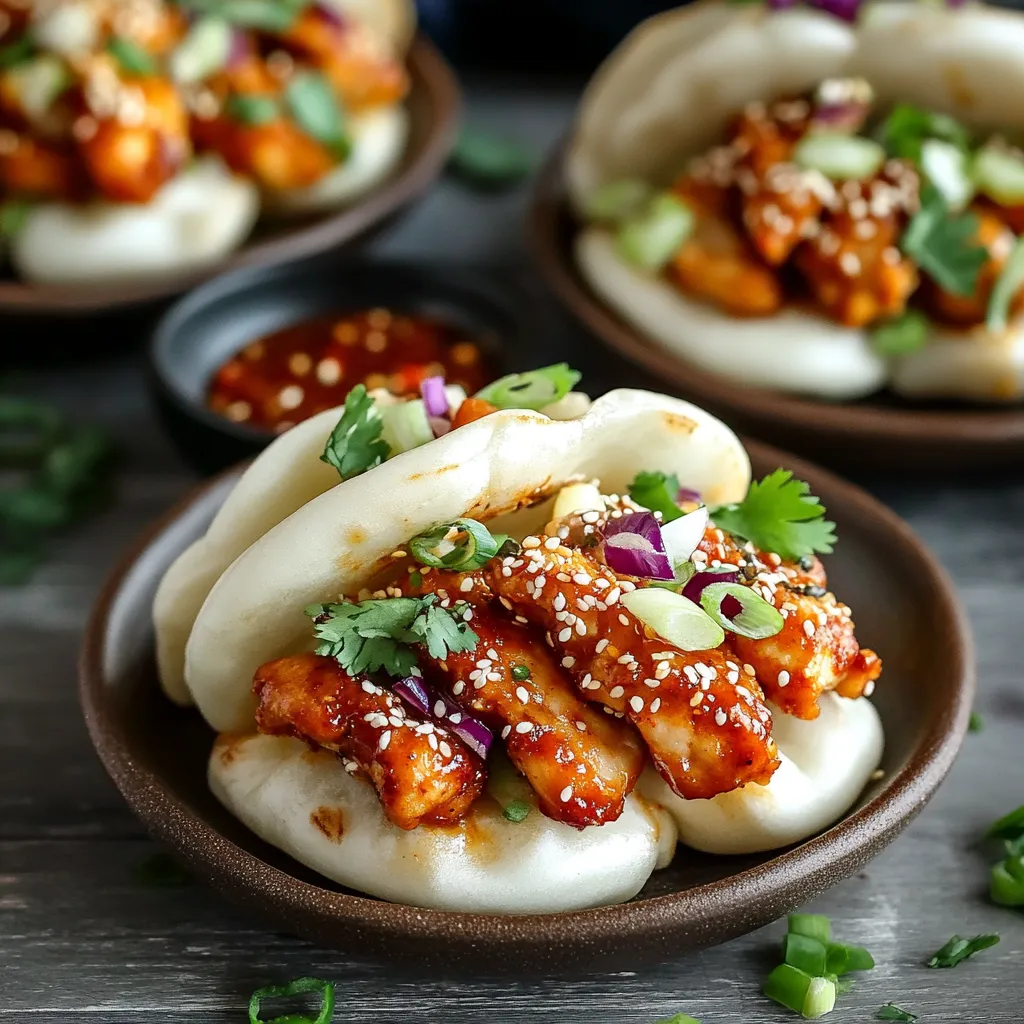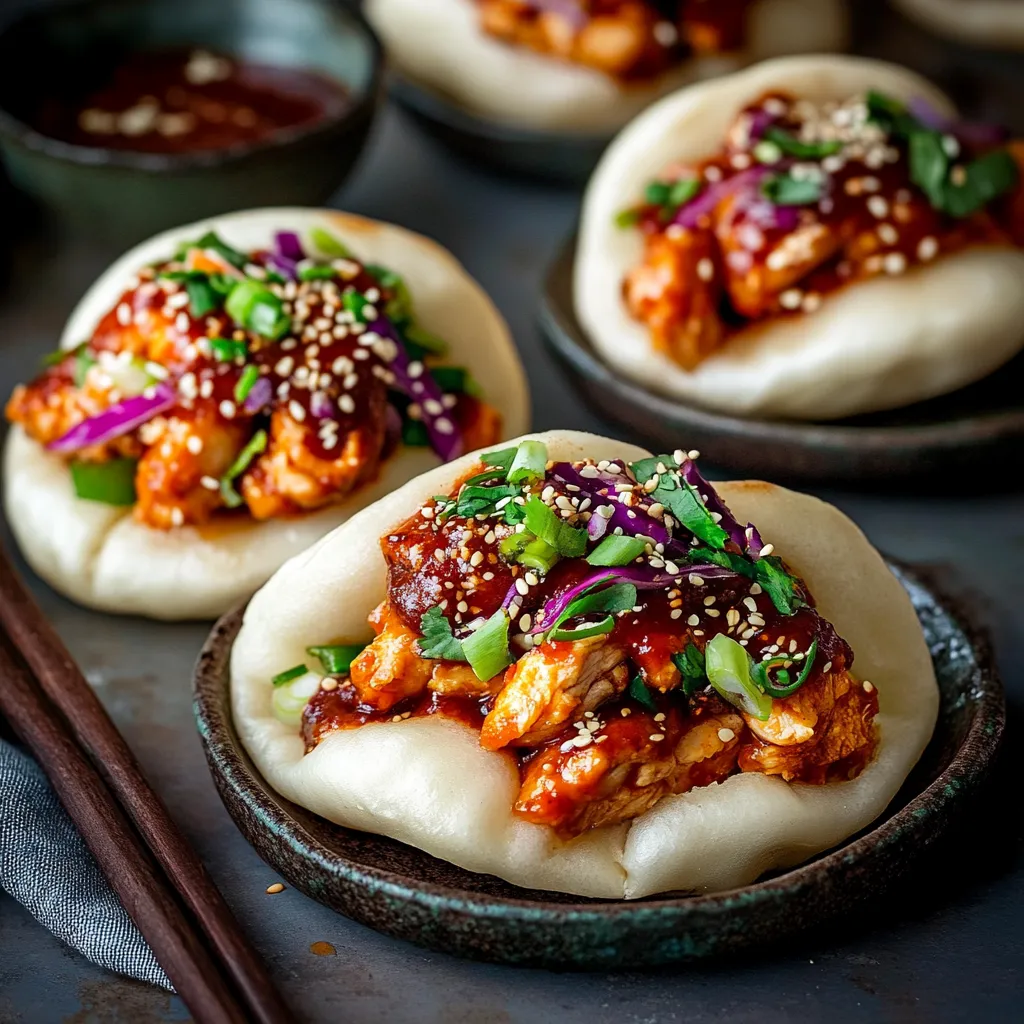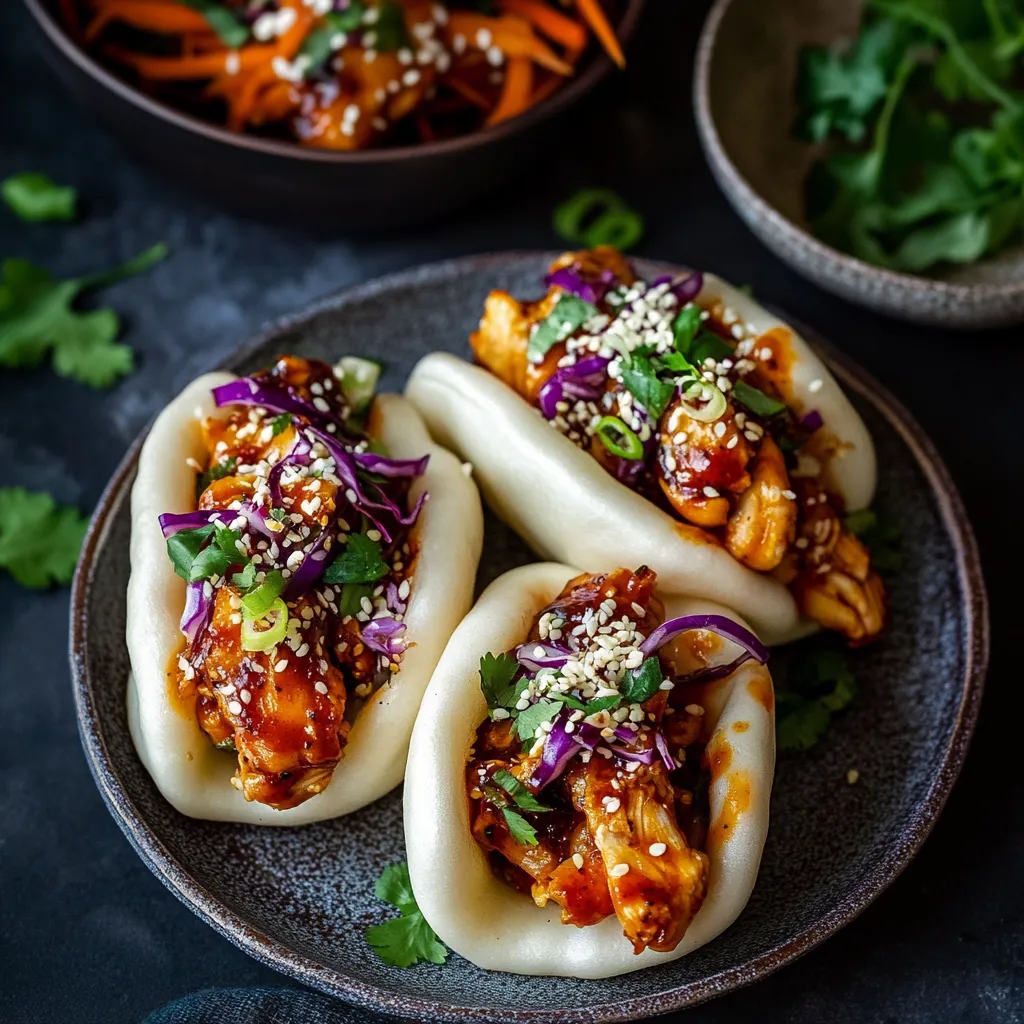 Pin it
Pin it
Fluffy, soft mini bao buns stuffed with crunchy Korean-style chicken are a total stunner for any get-together. You get tender pillows of steamed bread hugging golden, crispy chicken, all drenched in a sticky-sweet and spicy gochujang coating. Every mouthful packs a serious punch, and the contrast between the gentle bao and bold, flavorful chicken just keeps you coming back for more.
I gave these a shot after a trip to Seoul, where street vendors changed my mind about bao forever. My first tries? Total fails—too tough, not steamed right, you name it. But plenty of trial and error (and several dough disasters) later, I finally figured out how to get that dreamy, fluffy texture that makes these buns unbelievable.
Delicious Bao Essentials
- Butter: Gives the buns a rich flavor and makes them extra tender
- Warm milk and water: Kicks the yeast into action and gives the dough a boost of moisture
- Salt: Brings out all the flavors and keeps the yeast in check
- Sugar: Feeds the yeast and just slightly sweetens things up for balance
- Active dry yeast: Makes the dough rise and adds that airy lift—just make sure it's fresh
- All-purpose flour: Holds it all together and keeps the bao structure super light
Making Your Bao
- Steaming Method:
- Lay out your buns on parchment pieces, pop them in a steamer basket keeping them a bit apart, cover, and let them rise again for another hour till they look puffy. Boil water hard underneath, steam them for ten minutes, then pull them out right away so they stay nice and soft.
- Shaping Technique:
- Gently squish down the risen dough to deflate, split it into twenty pieces, and roll each into a smooth ball. Flatten, then roll them into ovals about three inches long. Brush a little sesame oil on top, fold over a chopstick in the middle to leave a small opening for filling.
- Kneading Process:
- Knead the dough really well for about ten minutes, pushing it back and forth until it's smooth and a bit springy but not sticking to your hands. Drop it in a bowl brushed with oil, cover with a damp towel, and leave it in a warm spot to double in size, around ninety minutes.
- Dough Creation:
- Mix two cups flour, a tablespoon of sugar, half a teaspoon salt, and one teaspoon yeast in a big bowl. Warm up three-quarters cup milk with a quarter cup water and melt two tablespoons butter into it. Pour this mix into your dry stuff, stir until it comes together and starts to look doughy, then move to a floured surface.
 Pin it
Pin it
I actually like playing around with this bao dough because it's so forgiving compared to most breads. My grandma always had me poke the dough with a finger—if the dent fills in halfway, it's ready to roll. Seriously, that simple trick saved so many batches and gets it perfect every time.
Chicken How-To
- Gochujang Sauce:
- Turn up the flavor by simmering together gochujang paste, soy sauce, honey, brown sugar, sesame oil, grated ginger, minced garlic, and a splash of rice vinegar. Let it bubble until thick and shiny, so it’ll cling to the chicken and hit that sweet-spicy-tangy note. Once the chicken is fried, toss it in this tasty sauce right before tucking it into the bao.
- Crispy Coating:
- After marinating, dunk those chicken chunks in a blend of flour, cornstarch, baking powder, a bit of salt, garlic and onion powders, and white pepper. Fry them in hot oil (350°F is just right) till they're crunchy and golden—usually about four minutes, batch by batch.
- Marination Process:
- Start your Korean chicken by chopping up boneless thighs, then soaking them in buttermilk loaded with garlic salt, white pepper, and a dash of plain salt. Let this soak for at least an hour, though overnight in the fridge works even better. The buttermilk’s tang does wonders for keeping your chicken tender after frying.
Tasty Sides
Pair these bao buns with fresh extras to take them up a notch. Layer in crisp cucumber slices for a cooling vibe against the spicy chicken. Quick-pickled red onions add a juicy crunch and pop of color. A shower of fresh cilantro gives bright, herbal notes, and a sprinkle of sesame seeds brings an earthy, nutty finish. Want more texture? Toss in thin radishes or shredded carrots, too.
Fun Twists
Shake things up to suit your diet or mood. Swap the chicken for crunchy tofu or tempeh and use the same marinade and coating steps. If you need less heat, just use less gochujang or stir in more honey for a sweeter kick. For a different herb flavor, try Thai basil or mint instead of cilantro—it totally changes things up.
Keep It Soft
Want fresh buns for days? Tuck unshaped bao dough in the fridge for up to a day and let it warm up before you work with it. If you’ve already steamed the plain buns, freeze them (with parchment in between layers). They'll keep up to three months. Steam them from frozen for about five minutes—they come out soft like day one!
 Pin it
Pin it
These Korean chicken bao buns hit that magical mix of texture and flavor that makes Asian fusion cooking so exciting. Every time I've served them at get-togethers, they're snatched up fast—folks even hang out in the kitchen hoping for seconds. They do take some work, but seeing the smiles (and empty plates) make it so worth your time.
Frequently Asked Questions
- → Will Effortless Korean Chicken Bao work if I prep in advance?
- Totally! Pop the buns in the fridge for two days or freeze them. Cook the chicken the night before and warm it up in the oven at 380°F for about 10–15 minutes. Hold back on the sauce till you're about to eat.
- → What's the easiest way to warm up leftover buns?
- Leftover buns from the fridge? Nuke them for 15–20 seconds or steam for 4–5 minutes. Got frozen ones? Just steam them straight from the freezer for 5–6 minutes.
- → Is it possible to bake the chicken and skip frying?
- For sure! Make baked chicken tenders your favorite way, then toss with spicy gochujang sauce after they're cooked.
- → What exactly is gochujang anyway?
- Gochujang is a thick, red Korean paste that’s sweet, spicy, and kinda funky because it’s fermented. It’s a must-have in Korean food and you’ll spot it at many big grocery stores or Asian markets.
- → About how many buns can I make with this?
- This batch makes 20 Effortless Korean Chicken Bao. Awesome for a group hangout or party.
